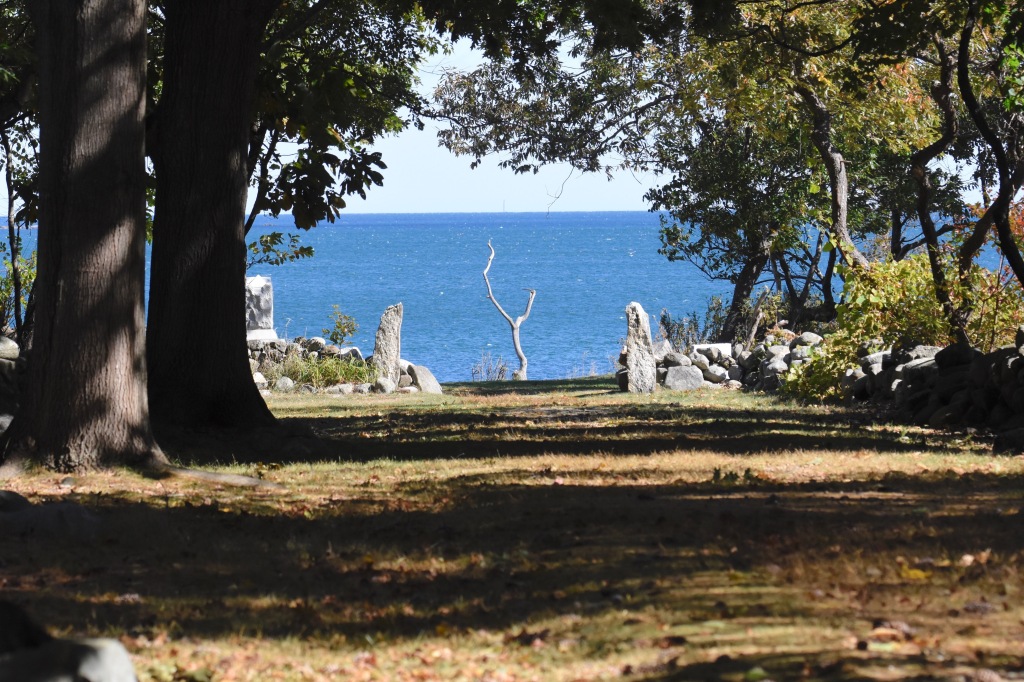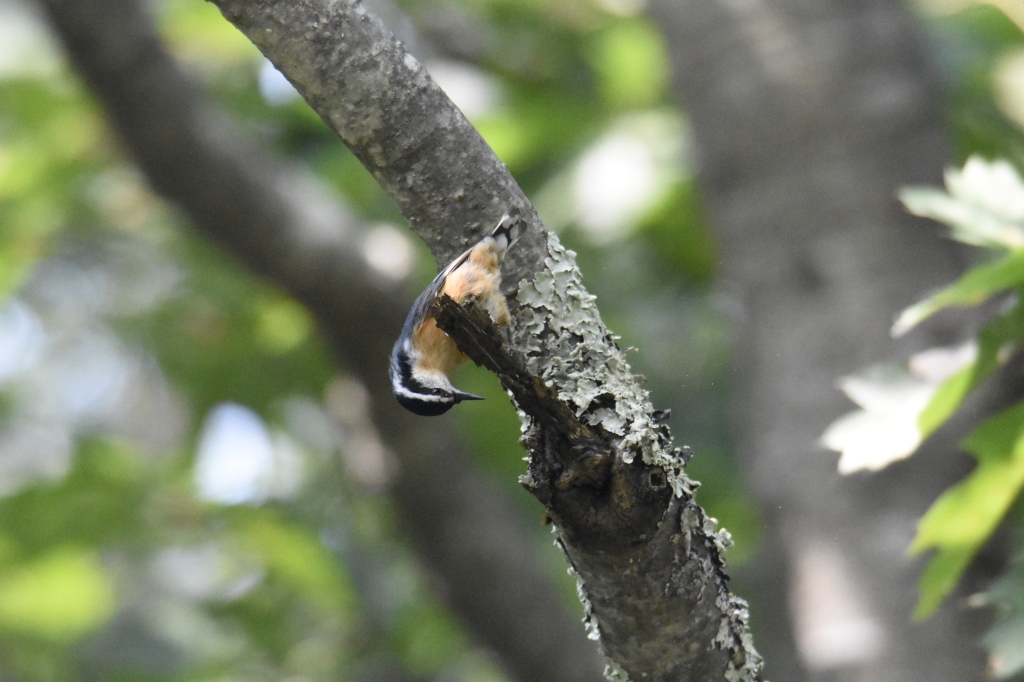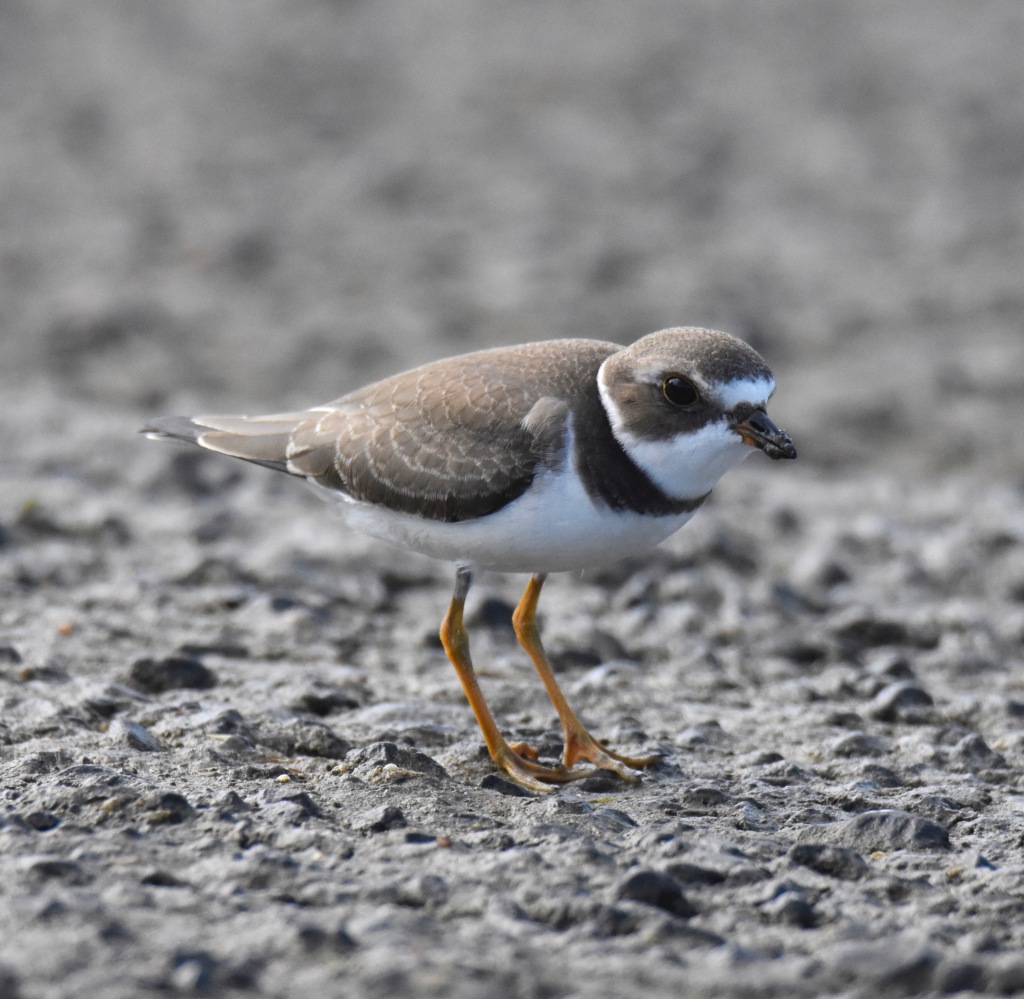Sauntering through the trails at Odiorne State Park in Portsmouth, New Hampshire is interesting because it is one of the hottest birding spots around and there is a rich cultural history here as well. Not only can one see a myriad of bird species during migration, but the physical landscape and monuments are testament to a bygone era.
There is no telling what kind of bird one might see during migration on the Seacoast. It is a great time to grab a pair of binoculars and to get outdoors! The first bird I encountered at Odiorne this fall was a Yellow-billed Cuckoo … A great start to fall migration!

Improving your Sparrow ID skills can be fun. Below is a White-throated Sparrow. Unlike the House Sparrow, this bird is native to the United States. And cute, too!

Venturing into the woods and walking the trails, you will see that some of the trees are very old.

The first people to discover Odiorne Point were the Abenaki and Penacook Native Americans. These tribes would stay here while passing through, taking advantage of the plentiful resources including digging for mussels and clams.

Then, in 1623, an Englishman by the name of David Thompson was the first to sail to Odiorne Point and permanently settle here. In 1660, John Odiorne joined this settlement and later acquired many acres of land and shoreline. The Odiorne family lived and thrived here for almost 300 years.

Warblers are small song birds that are challenging to photograph. They are fast little buggers, so you must be quick, and have a powerful lens to work with. I just love Warblers! Below is a Northern Parula.

Even with a powerful lens, they are very fast, and as you can see can be hard to photograph. This Magnolia Warbler below has a complete white eye ring and bright yellow chest.

An influx of Red-breasted Nuthatches this fall has delighted many backyard birders and those venturing into the woods. Keep your eyes peeled for Purple Finches and Evening Grosbeaks, too!

Ravens are an interesting bird and this is the first year I have been able to identify them in the field, and not just in my bird book. They are larger than Crows and their beaks are shaped differently. They do not hang out with Crows. In fact, they are often attacked by them. 😦

Heading back towards the point, I spotted this Yellow-bellied Sapsucker, below. One of many woodpecker species here, but not the most colorful!

And one of my favorites, Swainson’s Thrush, which is a species related to the American Robin. This little one was waiting for me as I returned to the parking area.

Aster is a native flower species and is very popular at Odiorne. State park personnel work very hard at eradicating the invasive plant species there. There are many invasive plants and vines they need to remove, and many native ones they want to encourage. This native Bumble Bee is an important pollinator. Two invasive bird species, for example, are the Starling and the House Sparrow, both of which were brought over around 1900 from Europe.

Rosa Rugosa is actually an introduced species (i.e. “Beach Rose”) that has been here for almost 200 years. It was brought into this country during the 1800s on a ship and it has been known to spread. The rose hips make great tea, but this plant may prevent other native species from thriving. (See photo below)

Another day of wonderful birding comes to an end. As I was leaving, however, I spotted a few Semi-palmated Plovers. At first I just saw a couple. Then, as I stood there, more began to appear to me as they were very well camouflaged against the rocky beach. Before I knew it, I had counted ten SP Plovers.

Thank you for reading all the way down!
If you enjoy this blog, please sign up for more by entering your e-mail and it will be sent automatically to your inbox! (I post about once per month).
*We do NOT sell, rent or lease any individual’s personal information or lists of e-mail addresses to anyone, ever, for any purpose whatsoever.
Such wonderful photographs. Thank you so much for sharing.
LikeLike
So many gorgeous photos, Anna! Thanks as always for these amazing posts.
LikeLike
Thank you Adam for being a supportive friend!
LikeLike
Hi Thank you for this interesting fun journey with you while birding for the day. Loved the pictures and narrative.
Talk to you soon Wendy
Sent from my iPhone
>
LikeLike
Lovely! And yes, that’s a Magnolia Warbler. I got one just like it this week and was in the company of the dean of local birders who made the ID. You’re lucky to have such a fruitful spot and thanks for sharing.
LikeLike
Thanks, Barbara! Sometimes it is challenging to make an ID. There was another warbler that looked like it, but it turned out to be a Yellow Rump. I hope that you are enjoying birding around your home area, and that you and your family are happy and healthy during these challenging times. 🙂
LikeLike